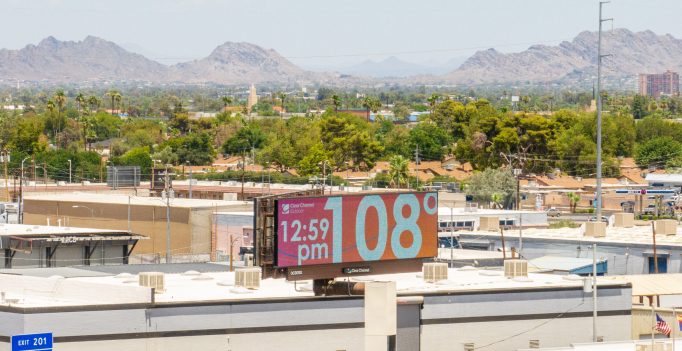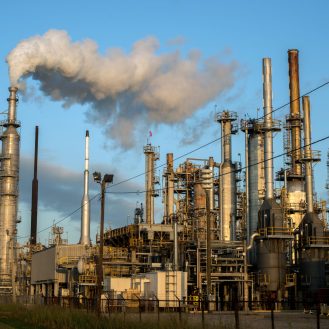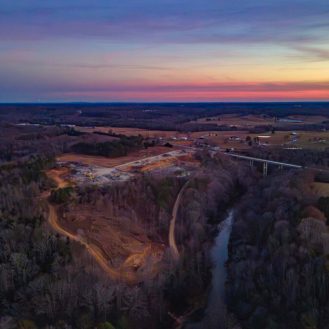Medical experts often call heat a “silent killer” because many people don’t notice the signs of heat stress until it is too late. But as climate change accelerates, the impacts of excessive heat are deafening.
Last year, there were nearly 120,000 emergency room visits for heat-related illnesses in the U.S., according to the Centers for Disease Control (CDC). More than 90 percent of these visits took place between May and September, during the hottest summer on record in the country.
It’s difficult to quantify exactly how many people die from heat because this factor is not often marked on death certificates, but the Environmental Protection Agency estimates that there are more than 1,300 heat-related mortalities annually—and that’s just in the U.S.
With forecasters predicting another hotter than usual June, July and August, cities across the country are scrambling to prepare for another scorching summer. The good news: A new tool announced on Monday by the federal government could help people forecast potentially dangerous heat up to a week in advance and implement strategies to mitigate it.
This tool is part of a suite of strategies governments and scientists are working on to tackle the climate change-fueled heat crisis slamming nations around the world. Today, we are exploring how these tools could help beat the heat—and why they still may not be enough.
Sizzling Forecasts: NOAA’s National Weather Service and the CDC teamed up to create the new nationwide experimental heat forecasting system, known as HeatRisk. The interactive dashboard allows users to plug in their zip code to learn what the heat threats are for an upcoming week, denoted by different colors depending on the level of risk.
At the lowest level, green areas represent little to no risk, while magenta marks the highest threat, indicating “a rare level of heat” that could last for days. With each color code, the index offers advice for cities and individuals to respond to the heat, such as by canceling outdoor activities or reducing time in the sun, with additional recommendations for people most at risk, including pregnant women, children with asthma and those with underlying heart conditions.
The tool uses historic context to determine unusual heat levels in the U.S. Its forecasts factor in temperature and humidity, which can exacerbate heat stress by reducing a person’s ability to cool themselves by sweating. In 2013, a prototype of HeatRisk was tested in California by schools, which still use it to plan outdoor activities, reports NPR.
“You can plan your day, and you can plan your week with your health in mind,” CDC Director Mandy Cohen said at a press conference on Monday.
This is part of a broader initiative by the federal government to monitor and mitigate the health impacts of heat. In a separate project, NOAA and the U.S. departments of Health and Human Services and Housing and Urban Development are working with CAPA Strategies, a company based in Portland, Oregon, to map the country’s “heat islands,” which are urban areas that experience higher temperatures than surrounding communities. Several factors fuel this phenomenon, including the heat-absorbing materials cities are built with and high use of machinery, reports Bloomberg.
On April 16, NOAA announced the 14 U.S. communities they will map for their eighth year of the initiative, including Charlotte, North Carolina, and Pierce County, Washington—along with four international projects in Mexico, Bangladesh, Kenya and Brazil. In each community, citizen scientists will help gather data using heat sensors on their cars to record the temperature, humidity, time and the volunteers’ location each second, according to NOAA.
Environmental Injustice: Scientists are also increasing their efforts to investigate the public health impacts of heat, with a particular focus on communities of color, who face higher threats of heat-related mortality and illnesses—a trend my colleague Victoria St. Martin wrote about in January.
In an investigative series published in September, the Washington Post dove deep on the myriad ways heat is pushing human bodies to the brink as climate change worsens. They found that, by 2050, 5 billion people will be exposed to at least a month of dangerous extreme heat when outdoors in the sun. The worst impacts will likely be in developing countries in South Asia and sub-Saharan Africa, which lack steady access to medical care and heat-resilient infrastructure such as air-conditioning and cooling centers.
Low-income neighborhoods in the U.S. are facing similar heat inequity issues. Cities around the country are working to tackle this justice issue by planting more trees to provide shaded areas, but critics say these initiatives are not happening fast enough. And some trees can’t survive the scorching temperatures brought by climate change, reports Grist.
One of the places at the forefront of this issue is Phoenix, the hottest large city in the U.S., where temperatures briefly surpassed 100 degrees Fahrenheit on April 21. In 2021, the Arizona city created an agency dedicated specifically to urban heat, which is busy prepping for another summer of potentially record-breaking temperatures.
“We’re opening more shelters with wraparound services for people who are unhoused, more cooling centers, and with increased hours of operation,” David Hondula, head of the urban heat office in Phoenix, said in an interview with Yale Climate Connections in which he outlined how the city plans to keep its residents safe in the heat.
“For Southwestern cities, heat is not episodic,” he said. “It isn’t like a hurricane that comes, does tremendous structural damage, and goes away in a day or two. Heat is a chronic hazard. It sits in place for the whole summer and beyond.”
More Top Climate News
On Monday, officials broke ground on a high-speed rail project that will connect Southern California and Las Vegas using trains that will go at an average speed of about 115 miles per hour. The system would be the first of its kind in the U.S., and is part of a broader federal push to create a high-speed rail network in the country, reports CNBC.
Proponents say that the rail system could help combat climate change by reducing highway congestion and offering travelers an efficient alternative to passenger car travel, which accounts for roughly 20 percent of emissions from transportation in the U.S. However, some experts say that a high-speed rail network still has many hurdles to face before becoming a reality, including the vast overhaul of aging infrastructure in the country’s railways.
Meanwhile, global wine production reached its lowest level since 1962, according to a new report from the International Organisation of Vine and Wine. In some wine-growing regions, extreme weather events such as droughts and fires, which many experts say were fueled by climate change, decimated grape crops, reports Euronews. Also on the extreme weather front, the World Weather Attribution group found that human-caused climate change made rainfall from the catastrophic storms in Dubai earlier this month 10 to 40 percent heavier.









